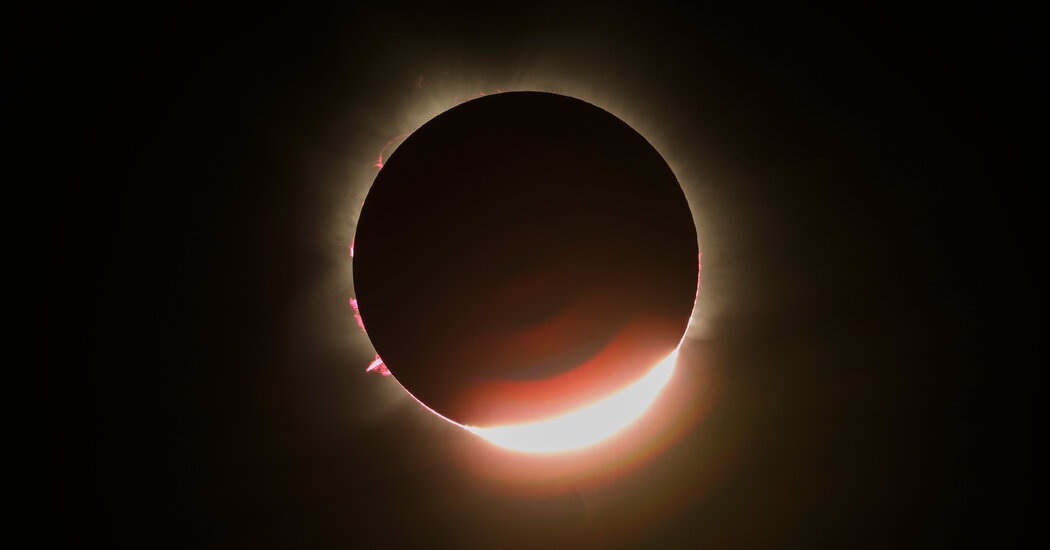These are answers to common questions about the April 8 eclipse, and we’re offering you a place to pose more of them.
On April 8, North America will experience its second total solar eclipse in seven years. The moon will glide over the surface of our sun, casting a shadow over a swath of Earth below. Along this path, the world will turn dark as night.
Skywatchers in Mexico will be the first to see the eclipse on the mainland. From there, the show will slide north, entering the United States through Texas, then proceeding northeast before concluding for most people off the coast of Canada.
Why eclipses happen is simple: the moon comes between us and the sun. But they are also complicated. So if you’ve forgotten all of your eclipse facts, tips and how-to’s since 2017, we’re here to explain it for you.
But before we dive in, there is one thing to know that is more important than anything else: It is never safe to look directly at the sun during an eclipse (except for the few moments when the moon has fully obscured its surface). At all other times, watch the event through protective eye equipment. Read on to learn about how to watch an eclipse safely.
What is a total solar eclipse?
A solar eclipse occurs when the moon orients itself between Earth and the sun, shielding the solar surface from our view.
